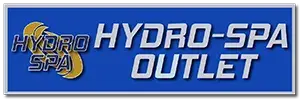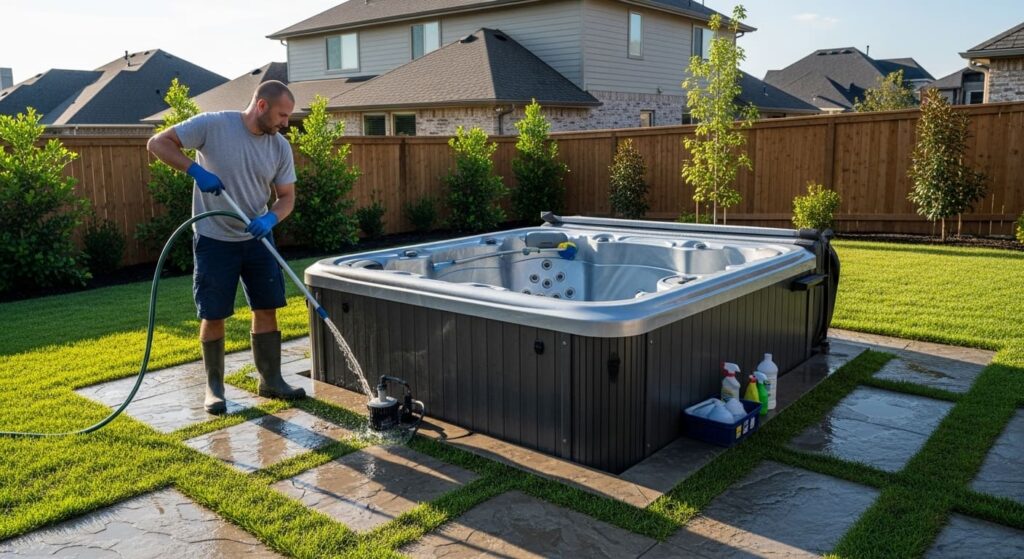In Woodland Hills CA, where sunny afternoons and cool evenings make soaking a year-round pleasure, homeowners often ask what shapes the overall investment for professional hot tub drain and cleaning. The answer is nuanced. Variables like spa size, location on your property, water condition, and the scope of service all play a role. Understanding those factors helps you plan confidently and avoid surprises. If you are gathering information to make a well-informed choice, a reputable resource such as Hydro-Spa Outlet can help you compare options and align expectations with the level of care your spa needs.
Before diving into specifics, it helps to think about what a drain and clean accomplishes. Over months of use, dissolved solids accumulate, filters clog, and a biofilm can build inside plumbing lines. A full reset removes that buildup, restores sanitizer efficiency, and protects pumps and heaters from working harder than necessary. In a microclimate like ours—where day-night temperature swings and seasonal winds are common—regular resets maintain comfort and consistency. From a budgeting perspective, the key is understanding what makes one service appointment different from another and why those differences matter.
Spa size and design
Larger spas hold more water and include more jets, diverter valves, and plumbing pathways. Cleaning every surface and purging internal lines in a big, feature-rich model naturally takes longer than in a compact two-person tub. Deep seating, loungers, and unique contours raise the level of detailing required to restore the shell’s sheen and remove stubborn waterline residue. Covers with integrated lifters or custom surrounds can add time for safe access and careful handling.
Access and placement on your property
Where your spa sits influences the time and steps involved in draining and refilling. Tubs nestled into raised decks, tucked beneath pergolas, or positioned on multi-level patios require thoughtful hose routing and protective measures to prevent water from pooling in the wrong spot. Technicians plan discharge to protect landscaping and hardscape, and when distances to suitable drain areas are longer, setup and breakdown time increase. In Woodland Hills, many backyards feature lush plantings or slope toward canyon edges; those layouts call for extra care and sometimes longer hose runs.
Current water condition
Water that’s been meticulously maintained between services typically needs fewer corrective steps during a drain and clean. In contrast, when sanitizer has struggled to keep up with heavy use, sunscreen residues, and debris from windy days, technicians may need to spend more time purging lines, detailing the shell, and refreshing filters to ensure a proper reset. If you are noticing cloudy water, persistent odors, or scaling around jets, expect the service to focus on deep cleaning that restores a balanced baseline.
Filter condition and replacement decisions
Filters are central to clarity and flow. A service visit will always address the filter set, either by deep-cleaning cartridges or recommending replacement when fibers have broken down. Heavily soiled or aging filters can cause low-flow issues that complicate refilling and initial balancing. Decisions around cleaning versus replacing affect the scope of work. A technician will evaluate the filter’s condition and discuss the most effective path to reliable circulation after the reset.
Line purging and biofilm removal
One major differentiator in service depth is whether the provider performs a robust plumbing purge. Biofilm inside lines can harbor microorganisms and reduce sanitizer efficiency. A comprehensive service uses a specialized purge product circulated before draining, followed by thorough flushing. This step takes time but pays dividends in how long the water stays balanced afterward. When comparing service offerings, ask how the provider approaches line purging and what indicators they look for to confirm a clean system.
Refill and water balancing
After cleaning, refilling with fresh water and balancing chemistry to your preferred sanitizer system—traditional, mineral-assisted, or salt—requires careful testing and adjustment. Local water mineral content in Woodland Hills can favor scale if not managed from the start. Some technicians use pre-filters on the hose during refills to reduce minerals and set the stage for steady water quality. The attention given to balancing in the first hours after refill often determines how smoothly things go in the next weeks.
Usage patterns and household habits
How you use your spa influences the scope of service as well. Families who soak often, entertain guests, or have young swimmers may see more lotions and oils in the water and a heavier filter load. Conversely, light use and consistent pre-soak rinses help maintain clarity between appointments. A good provider will tailor their approach to your routine, recommending practical habits that extend the life of the reset and keep ownership simple.
Seasonal timing and local conditions
Woodland Hills weather can bring bursts of airborne dust, pollen, and occasional ash from distant fires. Scheduling a drain and clean after such events can save time and effort later. Likewise, performing a reset as summer transitions to fall or after the busiest winter soaking months helps keep things steady when you want the spa most. Seasonally informed timing is a subtle factor that improves outcomes without adding unnecessary steps.
Scope clarity and communication
Clarity about what is included matters. A reliable provider outlines the exact steps: line purge, drain, shell detailing, filter care, refill, and water balancing. They note any add-ons that might apply to your setup, like pre-filters for high mineral content or attention to specialty components. Transparent communication about the plan ensures smooth service and a predictable experience from arrival to final checks. If you are comparing local options, a site like Hydro-Spa Outlet can help you understand standard practices and what questions to ask so you get the right level of service.
The value of preventive resets
Looking beyond a single appointment, periodic resets protect heaters, pumps, and control systems. Scale on a heater element acts like insulation, requiring more energy to reach temperature. Clogged filters strain circulation, sometimes triggering error codes. Clean plumbing and balanced water help components last and keep operating noise low, which many homeowners appreciate in quiet Woodland Hills evenings. The peace of mind that comes from predictable, clean water is a major part of the overall value.
How to prepare for a smooth visit
There are simple steps you can take to streamline the day. Clear a path to the spa, ensure outdoor outlets or breakers are accessible, and share any recent issues you have noticed—reduced jet pressure, foaming, or unusual odors. Let the technician know about your sanitizer preference and typical soaking schedule. These details help them tailor the balancing step and offer targeted tips you can use going forward.
Aftercare and maintenance momentum
Once the reset is complete, maintaining momentum is straightforward. Rinse filters periodically, keep the cover clean and latched, and top off water quickly after gatherings. Showering before a soak reduces oil load, and a quick test of sanitizer and pH a couple of times a week keeps small variances from becoming larger adjustments. With these habits, you preserve the clarity and comfort established during the professional visit.
FAQ
Q: What influences the overall investment for a drain and clean?
A: Spa size, access, current water and filter condition, the thoroughness of line purging, and the time required to balance fresh water are primary factors. Usage patterns and seasonal timing also play roles.
Q: How can I keep future appointments efficient?
A: Rinse filters regularly, minimize lotions before soaking, and maintain a steady sanitizer level. Share any concerns with your technician so they can address emerging issues proactively.
Q: Does a salt or mineral system change the scope?
A: The core steps are similar, but the balancing targets differ. Technicians tailor this phase to your system and habits to achieve stable, comfortable water.
Q: How do local conditions in Woodland Hills affect planning?
A: Sun, wind, and dust can increase debris load and scaling potential. Scheduling resets with the seasons and after windy periods typically leads to better stability.
Q: What signs suggest I should book sooner?
A: Persistent cloudiness, strong odors, a quick return of waterline residue, or low-flow warnings indicate that a comprehensive reset will help.
Q: Will a professional reset extend equipment life?
A: Yes. Clean lines and filters reduce strain on pumps and heaters, and balanced water mitigates scale, supporting efficient, long-lasting operation.
Get Affordable Hot Tub Cleaning with Hydro-Spa Outlet
Maintain a spotless and healthy spa without breaking the bank. Contact Hydro-Spa Outlet in Woodland Hills, California, for professional hot tub draining and cleaning services that keep your water fresh and your system performing perfectly.

